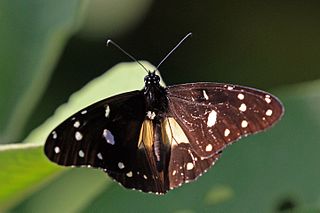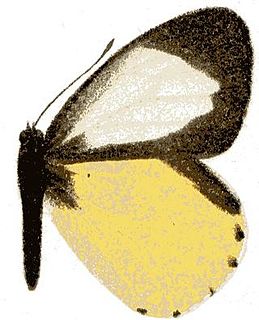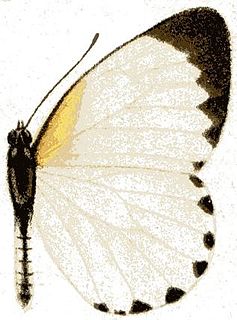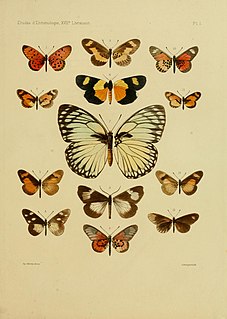| Mylothris sagala | |
|---|---|
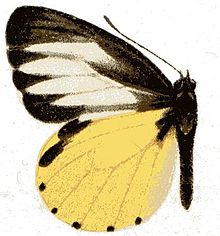 | |
| M. s. dentatus | |
| Scientific classification | |
| Kingdom: | Animalia |
| Phylum: | Arthropoda |
| Class: | Insecta |
| Order: | Lepidoptera |
| Family: | Pieridae |
| Genus: | Mylothris |
| Species: | M. sagala |
| Binomial name | |
| Mylothris sagala Grose-Smith, 1886 [1] | |
| Synonyms | |
| |
Mylothris sagala, the dusky dotted border or lemon dotted border, is a butterfly in the family Pieridae. It is found in Ethiopia, Kenya, Tanzania, the Democratic Republic of the Congo, Rwanda, Malawi, Zambia and Zimbabwe. [2] The habitat consists of submontane and montane forests.

Butterflies are insects in the macrolepidopteran clade Rhopalocera from the order Lepidoptera, which also includes moths. Adult butterflies have large, often brightly coloured wings, and conspicuous, fluttering flight. The group comprises the large superfamily Papilionoidea, which contains at least one former group, the skippers, and the most recent analyses suggest it also contains the moth-butterflies. Butterfly fossils date to the Paleocene, which was about 56 million years ago.

The Pieridae are a large family of butterflies with about 76 genera containing about 1,100 species, mostly from tropical Africa and tropical Asia with some varieties in the more northern regions of North America. Most pierid butterflies are white, yellow, or orange in coloration, often with black spots. The pigments that give the distinct coloring to these butterflies are derived from waste products in the body and are a characteristic of this family.

Ethiopia, officially the Federal Democratic Republic of Ethiopia, is a country in the northeastern part of Africa, known as the Horn of Africa. It shares borders with Eritrea to the north, Djibouti to the northeast, the de facto state of Somaliland and Somalia to the east, Kenya to the south, South Sudan to the west and Sudan to the northwest. With over 102 million inhabitants, Ethiopia is the most populous landlocked country in the world and the second-most populous nation on the African continent with a total area of 1,100,000 square kilometres (420,000 sq mi). Its capital and largest city is Addis Ababa, which lies a few miles west of the East African Rift that splits the country into the Nubian and Somali tectonic plates.
Adults have a weak flight. They feed on the nectar of various flowers. Adults have been recorded on wing in August, September, December and from February to May.
The larvae feed on Loranthus freisiorum , Erianthemum dregei , Oncocalyx fischeri , Oncocalyx sulfureus , Phragmanthera usuiensis , Englerina , Agelanthus and Viscum species.

Erianthemum dregei is a species of parasitic plant in the Loranthaceae family, and is commonly known as the hairy mistletoe or wood flower.

Agelanthus is a genus of Afrotropical plants in family Loranthaceae. They grow in trees, including Acacia and Combretum species, as hemiparasitic shrubs of varying sizes. The host plant is penetrated by a single haustorium, and the stems typically have swollen, flower-producing nodes. The flowers are often closely clustered (fascicled) with the five petals (pentamerous) fused into a tube (gamopetalous). The flower may have a swollen base and the tubes open along unilateral, V-shaped splits. The filaments remain spirally rolled inward when the flowers open, while the styles are inconspicuous, slender filaments that are somewhat thickened in the middle. Berries range from pink to orange and red in colour, and are around 1 cm in diameter.

Viscum is a genus of about 70–100 species of mistletoes, native to temperate and tropical regions of Europe, Africa, Asia and Australasia. Traditionally, the genus has been placed in its own family Viscaceae, but recent genetic research by the Angiosperm Phylogeny Group shows this family to be correctly placed within a larger circumscription of the sandalwood family, Santalaceae.


